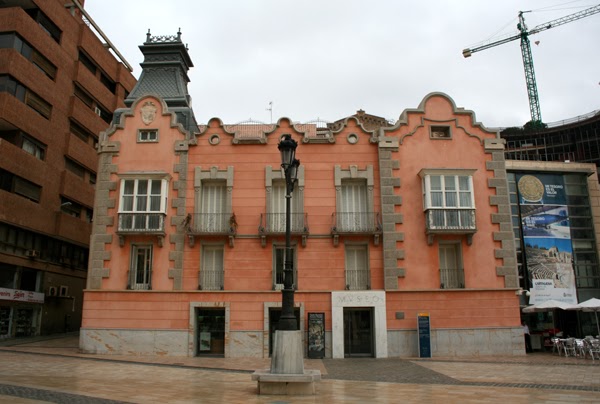 |
| A Geological Map of Spain |
I can’t say that I know much about the geology of Spain but the rocky places - upon which its castles, cathedrals and surrounding walls are built - really interest me.
During
my first visit to Spain - Almería in August - it was far too hot to explore anywhere and, except
when driving towards Mojácar, where I recall reddened sediments, I can’t
say that I noticed the geology - after all, I was on holiday and I much preferred to be cooling off beside the sea.
 |
| A Geological Map of Cataluña |
In
Cataluña, I came across a few regionally metamorphosed rocks whilst visiting
Parc Guell and, in Girona, the nummulitic limestone used in the city walls is
very distinctive. To remind me of my visit, I bought a geological map of
Cataluña from a bookshop that my host at the Museum of Geology in Barcelona
had recommended to me.
Around
Madrid, I saw a lot of granite, as well as a wide variety of soft sedimentary rocks that are exposed in various road cuttings, and I
was told on good authority that the evaporitic rocks that lie just below the
surface cause great problems for the design of foundations and tunnels.
Flying
into Alicante, not long before sunset, the geology could not be seen in any
detail but the barren landscape revealed pale rocks and oxidised iron minerals.
I
could only guess at what these were and didn’t know if they were similar in any
way to those that I would see in Murcia. Seeing no rocks in the city of Murcia, I had to wait until I went to
Archena.
 |
| Archena |
Driving
north-west from Murcia along the alluvial plain of the River
Segura, the highly dissected landscape, with its low hills, pale colours and a
wide variety of sedimentary structures, suggested that we might
be going through young rocks.
At high speed, it was only
enough to get a general impression, but I was very pleased to have seen this landscape.
Arriving
in Archena, the landscape changed quite dramatically. The River Segura and its
tributaries cut through massive, hard rocks into softer sediments and there
are some spectacular peaks. The generally pale cream colours identified these
as a limestone and, with occasionally reddened rocks, their deposition in a near
arid environment seemed very likely.
Walking
up to Balneario de Archena, I passed an outcrop of marl that is highly weathered and contrasts strongly with an irregular harder mass of
rock that lies above it, which reminds me of the Permian reefs that I know in South Yorkshire.
 |
| Murcia |
On
the bus to Cartagena, I hardly took my eyes off the landscape,
trying to make sense of a wide variety of pale rocky exposures that can
be seen in the road cuttings and valleys, as we wound across the mountains.
Speeding along the plain, the only hills that caught my eye were far off in the distance and soon disappeared from view.
Leaving
the bus station in Cartagena, you are immediately confronted by the city wall, behind which steeply
rises one of the five hills that form the core of the old city, and which
itself is defended by another wall. Looking out from El Teatro Romano, you get such
a good impression of this place – and why it was so coveted in the ancient history
of the Mediterranean region.
I
discovered a few small outcrops of regionally metamorphosed flaggy sandstone and
I took good note of the various stones that have been used to construct and
restore this fantastic monument. Igneous, metamorphic and sedimentary geology
can be clearly demonstrated here, as well as the archaeology and industrial and
economic history.
 |
| Cartagena |




















